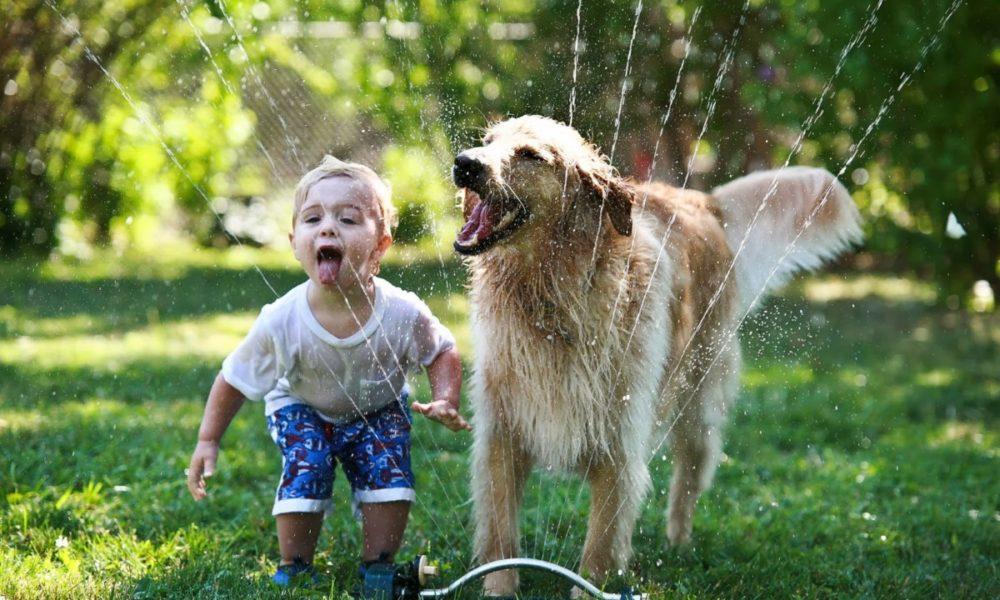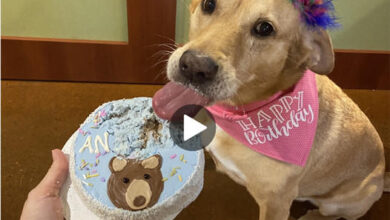The Relationship Between Pets And Children

Have you ever noticed how a child’s face lights up when they see a puppy bounding towards them? Or how they giggle uncontrollably when a kitten plays with their shoelaces? The relationship between children and pets is truly unique and can be immensely beneficial for both parties.
Pets can teach children responsibility, and empathy, and provide them with unconditional love and companionship. In return, children often become fiercely protective of their furry friends, forming bonds that last a lifetime.
According to the American Pet Products Association, approximately 67% of U.S. households own at least one pet. Of those households, 32% have children under the age of 18 living in them. This means that millions of American children are growing up alongside pets every day.
While having a pet can be incredibly rewarding for both children and parents alike, it’s important to understand the responsibilities that come with pet ownership and how to foster positive relationships between pets and kids.
The Benefits of Having Pets for Children
Having pets can bring so much joy and happiness into a child’s life, making them feel loved and supported. But did you know that having a furry friend can also be important for a child’s emotional development?
Studies have shown that children who grow up with pets tend to have higher self-esteem, empathy, and social skills than those who don’t. Pets provide constant companionship for children, which helps them feel less lonely and isolated.
This is especially important in today’s world where many kids spend hours each day on screens instead of interacting with others. Caring for an animal also teaches children responsibility, as they learn to feed, groom, and care for their pet on a daily basis.
Choosing the right pet for your child is crucial to ensuring a positive experience. It’s important to consider factors such as your child’s age, personality, and lifestyle when deciding which type of pet will be the best fit.
By doing so, you can help foster a loving relationship between your child and their new furry friend that will last for years to come.
Choosing the Right Pet for Your Child
Picking the perfect furry friend for your little one can be a tricky task, but it’s important to make sure that they’re a good match. Pet compatibility is key when deciding on the right pet for your child. You want to choose an animal that will fit well into your family’s lifestyle and personality.
Some pets may require more attention and care than others, so it’s important to consider how much time you have available to dedicate to your new pet. Age appropriateness is also an important factor to consider when choosing a pet for your child. Young children may not be able to handle certain animals, such as larger dogs or cats that are prone to scratching or biting.
It’s important to choose a pet that is gentle and easy-going with children of all ages. Additionally, some pets may require more responsibility than others, like feeding and exercising daily. Make sure you choose a pet that matches your child’s level of maturity and ability to take on responsibilities.
Choosing the right pet for your child can bring great joy and companionship into their life, but it also comes with responsibilities of pet ownership. As you move forward in selecting the perfect pet for your family, keep in mind that owning a pet requires regular vet visits, proper grooming, exercise needs, and training if necessary.
By choosing the right match from the start, you’ll set both yourself and your child up for a successful experience with their new furry friend!
Responsibilities of Pet Ownership
Taking care of a pet involves regular visits to the vet, grooming, exercise, and possibly training. As a pet owner, you have to ensure that your child understands the responsibilities that come with owning a pet. It’s essential to teach them how to be empathetic towards animals and how to take care of them.
One way to promote empathy in children is by involving them in the daily routine of caring for their pets. This includes feeding them, cleaning their litter box or cage, and taking them for walks or playtime. It’s also important to educate your child on proper pet care practices, such as washing hands after handling pets and ensuring they have enough food and fresh water available.
By teaching your child about responsible pet ownership early on, they’re more likely to develop a strong bond with their furry friend while also learning valuable life skills. Moreover, it can lead to increased self-awareness and emotional intelligence among children.
The next section will discuss introducing pets to children in more detail so that you can make sure their relationship is both safe and enjoyable.
Introducing Pets to Children
Are you ready to welcome a new furry addition into your family? It’s important to make sure that the introduction between your child and pet is positive and sets the foundation for a lifelong bond. Here are some tips to help with introducing pets to children:
- Set boundaries: Before bringing home your new pet, establish rules and limits with your child. Discuss expectations around how they should treat the animal, such as not pulling their tail or ears, or trying to ride them like a horse. Make sure they understand that animals have feelings too and need to be treated kindly.
- Supervised interactions: When introducing your child to their new pet, always supervise their interactions. Start slowly by allowing short periods of time together while you’re nearby. Encourage gentle touch and praise good behavior from both sides. Gradually increase the amount of time spent together as they build trust and familiarity.
It’s important to remember that every animal is different and may react differently in certain situations. Be patient with both your child and pet as they get used to each other.
In our next section, we’ll explore some common issues that can arise in the relationship between pets and children.
Common Issues in the Relationship Between Pets and Children
When it comes to the relationship between pets and children, there are some common issues that may arise. One of these is allergies, which can be a significant concern for families with sensitive individuals.
Another issue is aggression, as both pets and children may display aggressive behavior when interacting with each other. Proper training is also important to ensure that both pets and children understand appropriate behavior and boundaries.
Allergies
Having a pet can be fun for kids, but it’s important to remember that allergies may be a concern. Pet dander is one of the most common allergens and can cause allergic reactions in children. Symptoms such as sneezing, runny nose, and itchy eyes can make it difficult for children to enjoy their time with their furry friend.
If your child has allergies, there are ways to manage them while still allowing them to have a pet. Regular grooming and cleaning of the pet’s bedding and living areas can help reduce the amount of dander present. It’s also important to keep pets out of certain areas of the house, especially bedrooms, where allergens tend to accumulate. By taking these precautions, you can ensure that your child can enjoy their pet without suffering from allergic reactions.
When it comes to pets and children, allergies are just one concern. Another issue that may arise is aggression between pets and kids.
Aggression
To prevent pet aggression towards your kids, it’s important to understand that over 800,000 people annually require medical attention for a dog bite. Although dogs are known for their loyalty and affectionate nature, they can become aggressive when provoked or threatened.
Here are some causes and prevention strategies to ensure your pets remain calm around your children.
- Causes
- Lack of socialization: Dogs that haven’t been exposed to different people, animals, and environments may be fearful and anxious.
- Pain or illness: Dogs in pain may lash out if touched in a sensitive area.
- Territorial behavior: Dogs may view children as intruders invading their space.
- Prevention
- Supervision: Never leave young children alone with pets.
- Proper training: Teach dogs basic commands like ‘sit’ and ‘stay’ to establish dominance and obedience.
- Exercise: Regular exercise helps release excess energy and reduces the likelihood of aggressive behavior.
Proper training is essential when integrating pets into a household with children. It not only teaches them how to behave around kids but also reinforces positive behavior. By taking steps to prevent pet aggression, you can create a safe environment for both your child and furry friend.
Proper Training
Proper training is crucial to ensure your furry friend behaves appropriately around your little ones. Positive reinforcement is an effective way to teach your pet good behavior. Reward them with treats, praise, or even a playtime whenever they follow orders or show good behavior.
Be consistent in training as well. Training shouldn’t be limited to just one person; everyone in the household must participate in it. Moreover, you can also seek professional help if necessary. A professional trainer can give you proper advice on how to train your pet and correct any bad habits they may have.
Remember that every pet has its own personality and learning pace; don’t rush them into learning new things too quickly. With patience, consistency, and positive reinforcement, you can ensure that your pet will develop good behavior around children which will lead to a positive relationship between them both.
Nurturing a Positive Relationship Between Pets and Children
You can create a happy and loving bond between your child and pet by spending time together, playing games, and showing affection. However, it’s important to remember that pets are not toys but living creatures with feelings and needs. Setting boundaries will help ensure the safety of both your child and pet.
Teach your child how to approach the animal gently, without pulling on their tail or ears, and explain why it’s important to respect their personal space. Building trust between the child and pet is also crucial for a positive relationship. Encourage your child to be patient when getting to know the animal and allow them to approach at their own pace.
Reward good behavior with treats or praise so that they associate positive experiences with each other. As they spend more time together, they’ll learn each other’s likes and dislikes which will help deepen their bond. Teaching empathy and modeling kindness towards animals is another way to nurture a positive relationship between pets and children.
Show your child how to take care of the animal by feeding them, grooming them or taking them for walks. This helps instill a sense of responsibility in children while also creating shared experiences between pet and owner. By fostering this connection from an early age, you can create lifelong memories for both your child and furry friend alike.
Conclusion
Congratulations on completing this informative article about the relationship between pets and children! You’ve learned about the benefits of having pets for children, such as improved social skills and emotional development.
It’s important to choose the right pet for your child’s age and personality, and teach them the responsibilities of pet ownership. Introducing pets to children can be a delicate process, but it can lead to a positive relationship between them.
However, there are also common issues that may arise in this relationship, such as accidents or allergies. Nurturing a positive relationship requires patience, supervision, and proper training.
In conclusion, having a pet can bring joy and companionship to your child’s life while also teaching them valuable life lessons. By following the guidelines in this article, you can create a harmonious bond between your child and their furry friend.
Remember to always prioritize safety and care for both your child and their pet. Happy bonding!
Read more:


















































